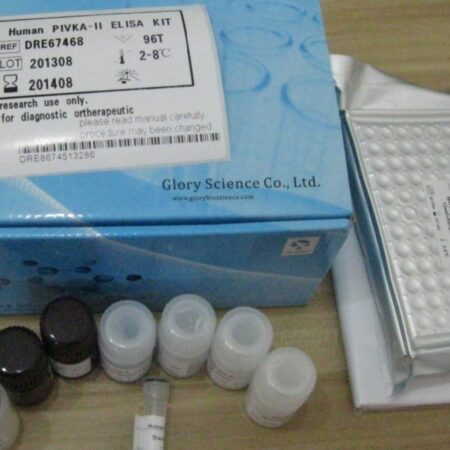Description
The reason why hepatitis B virus is famous is very related to its particularity. Now we will show it to everyone, let everyone know its true colors. Hepatitis B virus, referred to as hepatitis B virus (HBV), is one of the smallest DNA viruses known to infect humans, with a diameter of only 1/40,000 of a human hair, and it is also one of the most difficult to cure viruses. The replication of HBV has several main characteristics: 1. Although HBV is a double-stranded DNA virus, like HIV (HIV), which is an RNA virus, its replication involves a process of reverse transcription, so that the viral genome can be integrated into In the body, on the one hand, it makes it difficult for the body to completely remove the virus, and on the other hand, it becomes a potential carcinogenic hidden danger; 2. HBV can be converted into cccDNA after entering hepatocytes, and it is latent in the nucleus for a long time. Antiviral therapy is also difficult to completely eliminate; once the patient’s immunity is weakened due to long-term use of immunosuppressive agents, chemotherapy, or radiotherapy, cccDNA will jump out to do evil and transfer to a state of active replication, making HBV infection persistent for a long time. Therefore, at the current medical level, HBV is a virus that can be controlled but cannot be completely eliminated.
(1) Hepatitis B virus (HBv) has tenacious resistance: it is resistant to heat, low temperature, drying, ultraviolet rays, and chemical disinfectants of general concentration; it will not freeze to death at minus 20 degrees. Live 20 years! It can survive for 6 months at 30-37 degrees, 7 days when it exceeds 37 degrees, and 6 hours at 55 degrees. Commonly used disinfectants, such as alcohol, Lysol, iodine, etc., do not work on it at all and cannot kill them. Therefore, if you have hepatitis B patients at home, you should not use these disinfectants for disinfection, but HBV is afraid of high fever. Such as heating to 100 degrees, as long as 10 minutes can make it lose the infection. HBv is very sensitive to 0.5% peracetic acid, which is a strong oxidant. can kill them. 3% bleaching powder and 0.2% necromide can also be used to kill HBV.
(2) HBV is obviously hepatotropic: HBV is also called hepatotropic virus. It is because after it invades the human body, it will specifically attack the liver, burrow into the liver cells, and settle there and multiply its offspring. According to research, this is because there is a “receptor” of HBv on the surface of liver cells, which accepts HBv. A large amount of HBv is concentrated in hepatocytes, and it reproduces and replicates continuously. Mature HBv is released from hepatocytes and invades other healthy hepatocytes. This continuous replication and invasion eventually induces immune damage to hepatocytes.
(3) HBV also has a mild “pan-tropism”: although HBV has hepatotropism, it still has a certain “pan-tropism”! The so-called “pantropic” means that HBV occasionally invades organs and tissues other than the liver, such as bile duct epithelial cells, renal tubular cells, pancreatic cells, gastric mucosal cells, blood monocytes, etc. , HBv can sometimes cause diseases in the above-mentioned parts, such as HBV-related diabetes, HBv-related nephritis, HBv-related gastric disease, HBv-related blood diseases, etc. However, these “pantropic” damages are not inevitable. Most people infected with HBV do not experience “pantropic” damage, so it is mildly pantropic, and HBV mainly invades the liver.
(4) Strict species characteristics of HBv: that is to say, HBv mainly invades humans and other primates. So far, only humans, chimpanzees, gibbons, and baboons are susceptible to HBV infection, and other animals are not infected with HBv. Although traces of HBv may be found in blood-sucking insects, they are only temporarily “resident” and generally do not replicate and proliferate in them. Animals that people often come into contact with, such as chickens, horses, cattle, sheep, pigs, dogs, etc., cannot transmit HBv.
(5) Chronic characteristics of HBv infection: There are 93 million HBv carriers in my country, all of whom are chronically infected with HBv. The study found that almost all of these people were infected with HBv during fetal or early childhood. After more than ten years or even decades of infection, HBv still did not disappear in their bodies, but they did not develop disease. However, they can still continuously emit HBv to the outside world, which is an important source of hepatitis B infection.
(6) Variability of HBv: Scientists have found that HBv is one of the most easily mutated viruses. The so-called mutation is the genetic mutation of HBV, and the mutation is also the “strategy” adopted by the virus for its own survival. If a powerful anti-HBV drug enters the human body, it will inevitably pose a life-threatening threat to HBV. In order to resist the effect of the drug, They “mutate” themselves. To deal with the drugs, to make the drugs ineffective, so that they can continue to do bad things. The characteristics of HBV mutation bring many troubles to diagnosis and treatment.
(7) HBv itself is non-pathogenic to the liver: You may be confused when you see this. HBv is obviously hepatotropic and specifically damages the liver, so why is it not pathogenic to the liver? It’s strange. HBv does not have direct toxic effects on the liver. Facts have proved that although a large number of HBv carriers in our country have a lot of HBv in their bodies, hepatitis does not occur. If HBV can directly damage liver cells, then these asymptomatic HBV carriers will no longer exist, and they will all be hepatitis B patients. It turns out that the pathogenesis of hepatitis B is due to the participation of the body’s own immune cells. If immune cells are not involved, HBv will not cause liver damage (we will introduce in detail later).
(8) Carcinogenicity of HBv: It has now been confirmed that HBv is an important factor in causing liver cancer, and about 80%-90% of liver cancers have HBv background. Some people have observed that about 5%-10% of people with a 20-year history of HBV infection develop cancer. The reason for canceration is that the x gene of HBv integrates into the liver cell gene and mutates, resulting in liver cancer. People are most concerned about the carcinogenicity of HBV. Especially asymptomatic HBv carriers are most afraid of cancer. actually. Most liver cancers develop on the basis of chronic liver disease, especially cirrhosis. The livers of HBV carriers are basically free of inflammation, let alone cirrhosis. Generally, they are not directly cancerous, so there is no need to worry.



